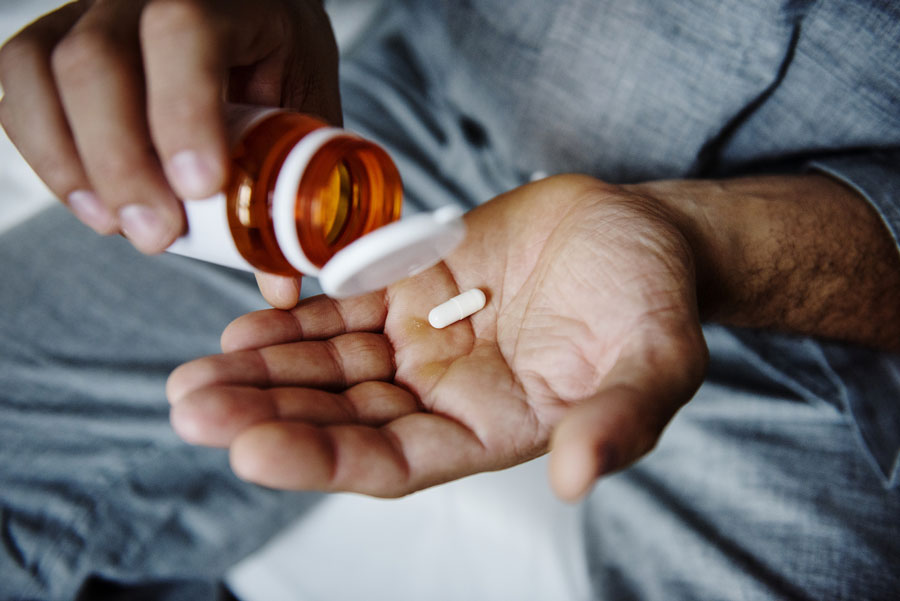
Table of Contents
Solpadol is the brand name of an analgesic drug that contains paracetamol/acetaminophen in conjunction with codeine. Combining these two commonly prescribed painkillers into one substance results in a very effective painkiller. The highly effective pairing is why Solpadol is sometimes found to be used inappropriately or by those with substance problems.
Paracetamol/acetaminophen by itself is hardly your typically abused substance. It is a painkiller, but it is often in its own category, and due to this, it can often be purchased over-the-counter in many jurisdictions. Since it is in a category of medication that is different from most other drugs, it can be taken in combination with several different substances without significant interaction worries.
Solpadol is only available with a doctor or health care provider prescription. This means it will ultimately be their decision as to the appropriateness of the treatment in the context of the illness or condition that the individual may be suffering. Often Solpadol is prescribed to treat chronic or recurring pain, frequently from injury or damage. This pain is considered to be untreatable by other treatments or where other treatments may be too strong.
Common conditions or situations where Solpadol may be prescribed could include chronic pain sufferers, like those who may have had Crohn’s disease flare-up or have other intestinal issues. In scenarios like this, where portions of intestinal tissue may have been surgically removed, it is common for Solpadol to be prescribed to help them deal with the consistent pain in their stomach.
The same can occur with individuals that are living with fibromyalgia or phantom limb pain as well. The pain is frequently chronic and untreatable with other courses of treatment. With phantom limb pain, the severed limb triggers a pain response in the brain, while with fibromyalgia, the pain occurs in a general sense all over the body. Both contribute to the abuse of opioids if they are prescribed during the recovery for more than a couple of days at a time.
Solpadol Side Effects
Solpadol may have a number of side effects related to either of the active compounds that are in it. When being abused, adverse health effects may be seen from either the paracetamol or from the codeine depending on how it is being abused and the dosages involved.
Solpadol is contraindicated for use where the individual may display hypersensitivity to codeine, paracetamol, or any of the other constituents. It also should not be used in any situation where morphine or other similar opioids are contraindicated.
Common side effects that those taking Solpadol may experience can include any of those that can be encountered while on codeine and may vary in intensity based on the dosages and frequency involved in the abuse. Some side effects of codeine abuse include a slurred speech pattern, excessive drowsiness, incredibly short attention spans, lack of focus, impaired judgment, dilated pupils, diminished coordination, and apathetic displays of behavior.
Some of the more immediate effects that people who abuse codeine will notice will be robust and persistent drowsiness. As with many other opioids, there will be a response from the abdomen of constipation and cramping, which can sometimes result in symptoms like nausea, dry mouth, and dizziness. There is also the potential for blurred vision, low blood pressure, and seizures.
More side effects can become apparent when Solpadol or codeine are abused over longer periods. They can include not only health effects but also maladaptive thought processes. Symptoms of long-term codeine abuse can include chronic depression and anxiety, persistent fatigue, problems creating and storing new memories, liver damage, kidney damage, muscle spasms, and even eventual death.
Withdrawal Symptoms & Timeline of Solpadol
When an individual stops taking Solpadol, there will generally be some immediate discomfort when the first withdrawal symptoms start within hours of the last dose of codeine. One of the first symptoms that the recovering individual may experience is general achiness and joint pain. There are also consistent reports of individuals in recovery developing depression during withdrawal. The extent and severity of these will often depend highly on the medical history and the specifics of the addiction.
Being addicted to Solpadol isn’t usually a life-threatening issue, which can lead some people to try and quit cold turkey on their own, leading to potentially deadly complications or even a relapse.
In most cases, the user will go through a withdrawal process similar to an opioid drug withdrawal syndrome, which can manifest any of the following signals. These include watering eyes, runny nose, excessive yawning, restlessness, uncontrollable perspiration, chills, heartbeat irregularity, and elevated blood pressure. There may also be the development of irritability, increased respiration, sleep disturbance, anxiety, tremors, weakness, abdominal cramps, nausea and vomiting, and diarrhea.
The acute withdrawal phase will often last between 1 and 2 weeks, with the severity of the side effects reaching their peak about 2-4 days into the detox process. The post-acute withdrawal stage can last for months and even years after the abuse, while the behavior is unlearned and the brain chemistry begins correcting itself.
How to Get Help if Addicted to Solpadol
Suppose you or someone you care about has been prescribed Solpadol and may be having trouble with the drug after having built a dependency on it. In that case, it might be time to work with some experienced addiction professionals. By working with substance counselors, a treatment plan can be created with the success of the recovering individual as its primary goal. Not only can a plan be tailored to the patient with inpatient services, but they will be able to detox in a safe and monitored environment medically. Safe and supervised while prescription drugs speed along the detox process, the individual is free to work with counselors on how to avoid situations that trigger cravings and can build a solid recovery.
If you or a loved one is struggling with an addiction to Solpadol and seeking rehab in Orange County, the time to reach out for help is now. Ocean Recovery is an addiction and eating disorder treatment center in California. Call our premier rehab facility today to get the help you need and deserve.
Was this article helpful? Follow our blog for more information about substance use, addiction, and recovery. Recent posts include topics such as the health benefits of the beach and the importance of courage in recovery.
Sources:
Ocean Recovery has strict sourcing guidelines and relies on peer-reviewed studies, academic research institutions, and medical associations for our references. We avoid using tertiary references as our sources. You can learn more about how we source our references by reading our editorial policy.
- Jóźwiak-Bebenista M, Nowak JZ. Paracetamol: mechanism of action, applications and safety concern. Acta Pol Pharm. 2014;71(1):11-23.
- Peechakara BV, Gupta M. Codeine. StatPearls Publishing; 2022. Accessed July 31, 2022. https://www.ncbi.nlm.nih.gov/books/NBK526029/
OCEAN RECOVERY EDITORIAL GUIDELINES
The internet contains a vast amount of misinformation, but when it comes to your health only peer reviewed, research centered data matters. At Ocean Recovery, all content published throughout our website has been rigorously medically reviewed by a doctorate level clinician, and cross checked for medical accuracy. Our editorial process helps our readers trust that the information they are consuming is factual and based upon scientific data. Your health is our top priority, find out more about how we safeguard the integrity of information on our website. Read More About Our Process






